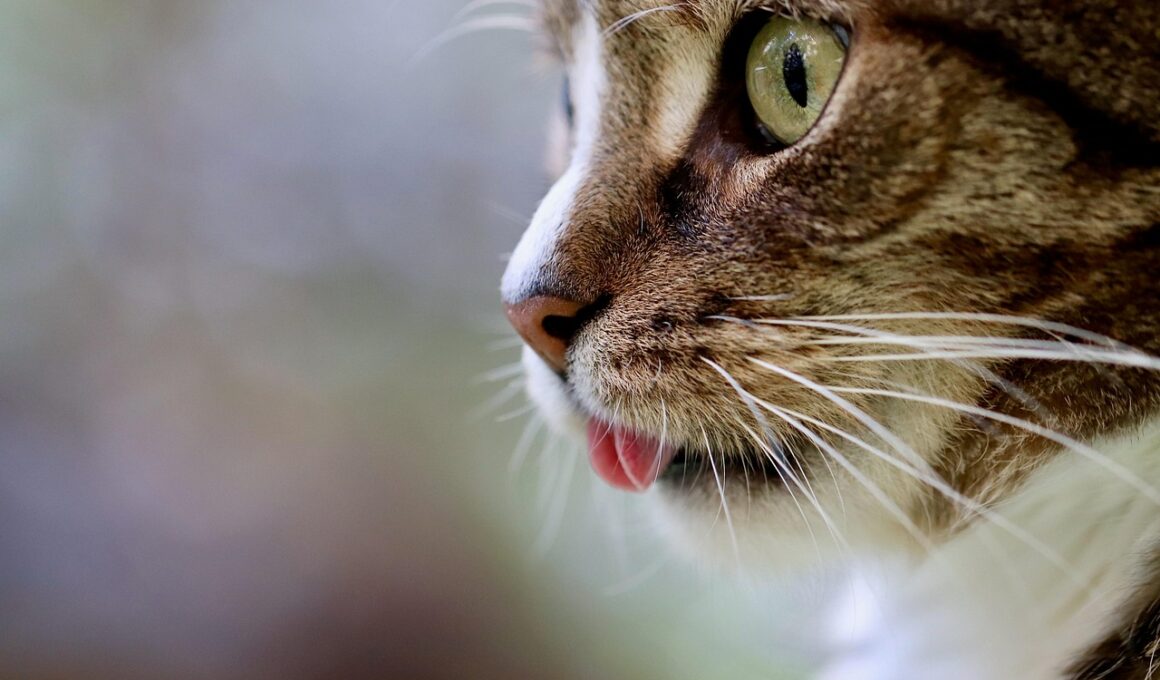Expert Tips for Selecting Cat Safety Training Equipment
Choosing the right safety training equipment for your cat is crucial for ensuring their safety and well-being. The right equipment not only facilitates learning but also helps to prevent injuries during training sessions. Prioritize equipment designed specifically for cats, such as harnesses, leashes, and training collars. These items should have adjustable features to offer a comfortable fit without restricting movement. It is essential to focus on durability, especially if your cat is an active learner or tends to chew on items. Research various brands to find those that are known for their resilience and reliability. Read customer reviews and check product ratings to gauge the effectiveness of the equipment you are considering. Also, ensure that the materials used are non-toxic and safe for your cat. Equipment should be easy to clean and maintain since hygiene is paramount. Investing in quality safety equipment ensures your training experience is productive and enjoyable, both for you and your feline companion. By following these guidelines, you can feel confident in your selections, providing your cat with the best opportunities for learning in a safe environment.
Another important factor to consider when selecting cat safety training equipment is the size and weight of your cat. Cats come in various shapes and sizes, and using equipment that doesn’t correspond with your cat’s measurements may lead to discomfort or even injury. Always refer to the manufacturer’s sizing charts to ensure a proper fit. For example, harnesses should fit snugly yet securely, allowing for a full range of movement. Finding the correct leash length is also crucial; it should provide enough leash control while allowing your cat freedom to explore their surroundings. If you have multiple cats with different sizes, consider adjustable or customizable options that can accommodate their unique needs. Additionally, some equipment, such as safety gates or carriers, should be easy to handle and transport, especially for trips or visits to the vet. By understanding your cat’s individual requirements and dynamics, you can make more informed choices, enhancing the effectiveness of your training sessions while keeping them safe. Making selections tailored to your cat’s personality and physical attributes will lead to more successful training outcomes.
Assessing Your Cat’s Behavior and Training Needs
Assessing your cat’s behavior and training needs is key to selecting the right safety training equipment. Begin by observing your cat’s temperament, as this can significantly influence which equipment will work best. If your cat is timid or easily startled, opt for softer materials that won’t cause further anxiety. For more active pets, you’ll need sturdier, high-quality items that can withstand vigorous activity. Think about your training goals: are you working on leash training, socialization, or addressing specific behavioral issues? Each goal may require different tools. For instance, specific harnesses are designed for leash training while others focus on comfort. Consult with a professional trainer if you’re unsure what equipment is appropriate for your cat’s data behavior. Moreover, introducing your cat to their training tools ahead of time can help diminish anxiety. Allowing them to explore and familiarize themselves with the equipment ensures a smoother transition into training. Fostering a positive relationship with safety equipment will significantly enhance the overall training experience, promoting healthy interactions and trust between you and your feline friend.
Selecting equipment that is user-friendly for both you and your cat is essential for successful training. Look for harnesses and collars that are easy to put on and take off to prevent stress during the training process. Features like quick-release buckles and adjustable straps are beneficial for convenience and comfort. Before you make a purchase, you should always test the equipment. For instance, check how easily you can put on and adjust the harness on your cat. Ensure that it is lightweight, allowing for easy movement, especially during extended training sessions. Pay attention to the weight of the leash, as heavy leashes can be cumbersome and tiring to manage. Incorporating tools like clickers or treats can create positive reinforcement during training, making it a delightful experience. With practice, both you and your cat can work seamlessly together. Large color-coded or visual cues can help guide you in managing specific techniques. Experiment with different styles and types of equipment to find what resonates well with your training dynamic. Nothing beats finding tools that suit your personal training approach as well as your cat’s comfort level.
Evaluating Safety Features
When selecting safety training equipment, evaluating safety features is critical for preventing accidents. Check for safety certifications and labels indicating that the equipment has undergone thorough testing. Products that comply with safety standards provide assurance that the materials used are durable, reliable, and secure. Avoid selecting items with small parts that may pose choking hazards, especially for playful or curious cats. Reflect on the potential risks associated with the equipment; overly long leashes might encourage cats to wander into dangerous areas. Look for harnesses equipped with reflective materials to enhance visibility during nighttime walks, further ensuring your cat’s safety. Moreover, straps should not impair your cat’s ability to move freely; consider using spreaders that distribute pressure evenly across their bodies during harness training. Additionally, investing in a breakaway collar allows your cat to escape if they become trapped. This is particularly important for outdoor cats. Providing essential safety features significantly lowers the risk of harm. Ensure that these aspects are prioritized when you’re purchasing equipment to guarantee that training remains a positive and secure experience.
Budgeting for the right cat safety training equipment is another vital aspect to consider. While it’s tempting to choose the least expensive option available, remember that investing in quality safety gear can save you money in the long run. Poorly made equipment may lead to injuries or ineffective training, causing you to spend more on replacements or additional training. Set a reasonable budget based on your cat’s specific needs and the type of training you will be undertaking. Research cost-effective options without compromising safety and quality. Comparing prices among different suppliers will help you identify deals and discounts. Look for seasonal sales, membership discounts, or package deals that can save you money. Local pet shelters or veterinarians may offer recommendations for reputable suppliers and possibly even discounted equipment for new adopters. Ensure that you don’t overlook the potential need for additional items, such as extra harnesses or collars for training purposes. Keeping finances in check while providing your cat with the tools essential for their safety is indeed achievable by planning and smart shopping.
Conclusion and Final Considerations
In conclusion, selecting the right cat safety training equipment significantly contributes to a successful training experience. Always prioritize your cat’s comfort, behavioral needs, and safety when making choices. High-quality, durable materials provide peace of mind, knowing that your cat will be well-equipped for learning while minimizing potential risks. Equip yourself with knowledge about behavioral assessment, equipment testing, and safety features to make informed decisions every step along the way. Do not underestimate the importance of proper sizing and user-friendliness, as these play substantial roles in effective training. Budgeting wisely ensures that you can invest in quality resources without breaking the bank. Remember, the goal is to create positive experiences for you and your feline friend throughout the training journey. Engaging in training sessions should be enjoyable, rewarding, and safe for both parties. By adhering to these expert tips, you can facilitate a nurturing environment that enhances your cat’s development and strengthens your bond. As your cat learns and grows, adaptable approaches to equipment will continue to serve you both well in future training endeavors.
Cultivating a positive atmosphere around training can transform your sessions into delightful experiences for you and your feline companion. Use positive reinforcement techniques, such as treats or praise, to encourage desired behaviors during training. Your choice of equipment will directly impact the training success trajectory. Consider introducing elements like clickers to promote understanding of commands and responses. Trust your instincts and knowledge of your cat’s unique characteristics as you progress through the training process. Each session cultivates learning and cooperation, shaping your relationship with your cat. Your emphasis on safety and comfort will ensure that your cat eagerly participates in training sessions, creating a fun and productive environment. Always be attentive to your cat’s reactions, adjusting methods and equipment based on their comfort levels. With time, patience, and the right equipment, you can witness exciting transformations in your cat’s behavior and responsiveness. Implementing these strategies will create a harmonious training experience that prioritizes safety and fosters trust. By adhering to these guiding principles, both you and your cat will enjoy a successful training journey together.


